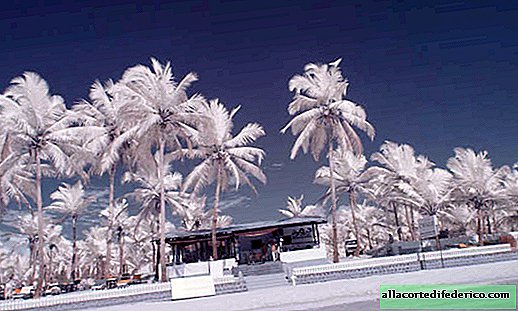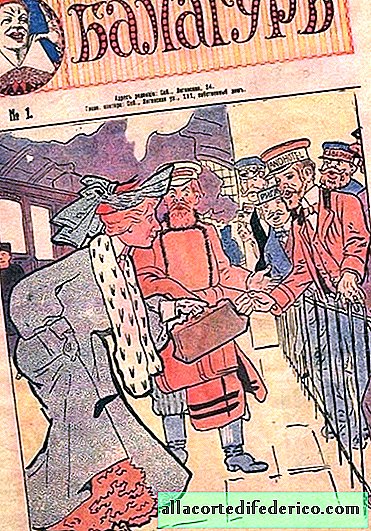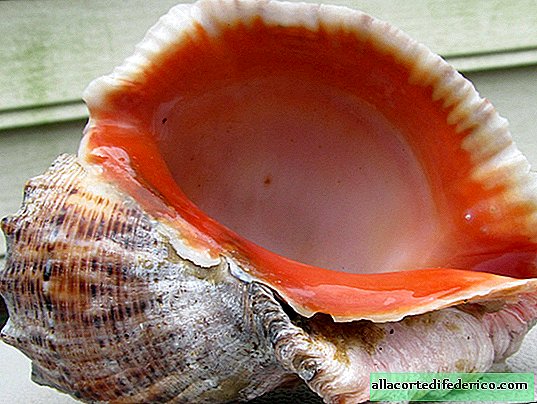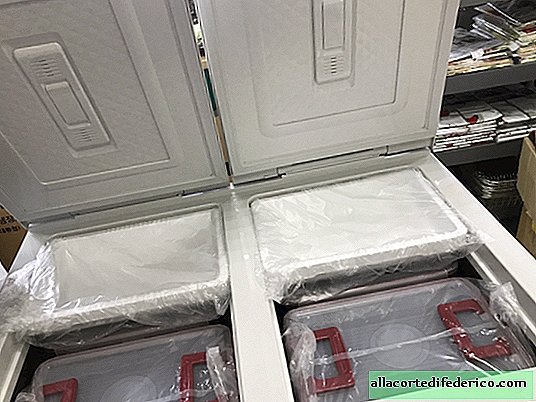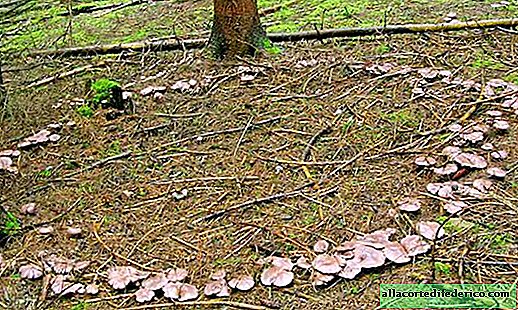How to make real pomegranate juice
Azerbaijan’s calling card is pomegranate, the whole world knows about it, because 98% of the AZNAR plant’s production is exported. Pomegranate juice, which is sold on store shelves in my city, as it turned out, is very far from real freshly squeezed pomegranate juice. In this report I will tell you how to make real juice from real fruits, we will visit two large plants in the country - AZNAR (Grante) and Gabala Canning Factory (Jale).
The history of Azerbaijan is inextricably linked with the culture of pomegranate cultivation, going back centuries. Pomegranates are historically cultivated in almost all regions of Azerbaijan, but Shirvan, lying in a strip of dry subtropics, is a recognized center for the growth of the best varieties of pomegranates. For the production of juice, pomegranates growing in the Goychay region are most often used.
It was Goychay’s grenades that gained worldwide recognition and became synonymous with "real Azerbaijani grenades." The secret of great taste and consistent quality of Goychay pomegranates is the unique microclimate and soil composition of the region, which are not found anywhere else in the world.
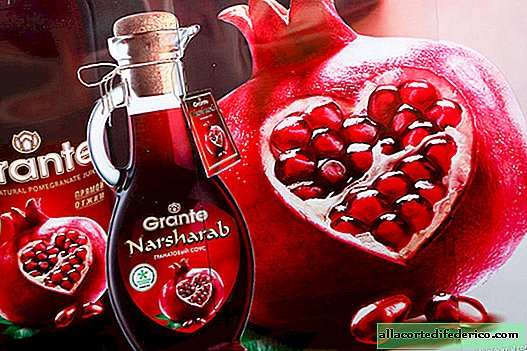
Pomegranate is collected within 40-45 days in October-November. From 3 kg of pomegranate at the output, 1 liter of juice is obtained. Of the 5 thousand tons that are collected in the Goychay region, 1300 tons of juice will be obtained. In the production of juice at the AZNAR plant, two fundamentally different technologies are used - either the production and bottling of juice directly in a bottle and shipped to the manufacturer, or the accumulation of concentrate in aseptic tanks with a capacity of 50 tons, there are a total of 100 tanks at the plant.
From 10 to 15 thousand bottles can be bottled per day at the plant.
When the pomegranate collection season is stopped, the juice spill occurs in a planned manner from previously filled aseptic tanks.
The main importers of juice are the USA, Canada, Germany and Australia. The sale of juices for export is carried out both under its own brand Grante, and under individual brands. Depending on the country, a 1 liter bottle of juice costs between $ 5 and 7 euros in retail. The Grante brand belongs to premium brands of high-quality natural juice.

Unloading grenades on line directly from the car body.

Only whole, fresh, undamaged fruits of special grades of Goychay pomegranate, manually sorted on a conveyor, are accepted for processing by the plant.


Juice extraction occurs in a gentle mode on pneumatic membrane presses (by applying gentle pressure on the grains) instead of screw screws (extracting juice by grinding grains), which are common in other enterprises.


Thanks to the use of a closed technological scheme with minimal contact with air, the course of oxidation processes is excluded. The product has an extremely gentle thermal effect with the use of pasteurizers (up to 100 ° C), including tunnel, instead of sterilizers (above 100 ° C). An ultrafiltration unit is used for filtration, instead of plate-type or alluvial filters open to air access, which are used universally.

After pasteurization, freshly squeezed juice is stored in aseptic stainless steel containers with a volume of 50 m3 (for 5000 tons of one-time storage), unlike all other similar enterprises that use various preservatives to store juice in ordinary containers. These are the very tanks where juice is stored, which will be bottled over the next year.






Interesting facts and legends about grenades:
- Since ancient times, pomegranates have been considered the king of all fruits in the East. Even externally, it stands out among the fruits with a fiery red crown at the top. Tradition says that it was the original sepals that suggested the shape of the crown.
- According to the Qur'an, pomegranate trees, among others, are planted with a beautiful garden of Eden. For many peoples, the flowers and fruits of pomegranate are considered a symbol of wealth, abundance and fertility.
- Images of pomegranate are found on the Egyptian pyramids, on ancient Byzantine fabrics, in the ornaments of the ancient Greeks and Arabs. The pharaohs greatly appreciated the fresh juice of pomegranate, considering it miraculous, able to strengthen not only the body, but also the spirit. The ancient Egyptians were buried with pomegranates in the hope of their rebirth. Also, the ancient Egyptians and Assyrians often depicted pomegranates in their sculptures as a sacred tree or "tree of life."
- The Italians believe that Eve was seduced in Eden by a pomegranate. And King Cyrus, the founder of the Persian Empire, desired as many good generals as there were seeds in a pomegranate. Later, the Prophet Muhammad urged his followers to eat pomegranates, believing that he cleanses of envy and hatred.
- In Greek mythology, pomegranates were the favorite food of the gods, prompting many to believe that their use leads to immortality. And Persephone, the goddess of agriculture, the seed of this fruit was offered by Hades. Succumbing to the temptation of this ruby fruit, similar to a gem, she took it and thereby doomed herself to spend several months of the year in the underworld of Hades.
- The ancient Greeks believed that the first pomegranate tree was grown on the island of Cyprus by the goddess of love Aphrodite. Since then, pomegranate juice has gained a reputation as a "love potion." Nowadays, the Greeks traditionally break pomegranates at weddings as a symbol of fertility.
- In China, sweet pomegranate seeds are eaten on the wedding day, thereby blessing the newlyweds. A picture of ripe pomegranate is a popular wedding gift.
And this is another large plant - the Gabala cannery, which produces juice brands: Jale and Golden Garden.
Occupying an area of 13 hectares and having a processing capacity of 70,000 tons of fruit per year, the Gabala Canning Factory annually produces 210,000 tons of fruit juice and nectar. The plant is equipped with the latest production equipment.
The plant’s workflow covers all stages of production - from the collection and reception of raw materials to packaging products.
A total of 26 types of natural juice are produced.

The main production area of the Gabala Canning Factory is the production of natural juices, nectars and concentrates.
The line for the production of apple juice and concentrate, primary rejection, then the juice is pressed.




Ultrafiltration, after which an apple juice concentrate is obtained. Part of the concentrate is frozen and stored for their own production needs, and part is exported.

Bottling orange juice made from imported concentrate.


Juice production in Tetra Pak packaging.




Tasting room.


Here are some more interesting answers to questions from the manufacturer’s website:
- What is a concentrate?
Despite the fact that many media outlets have repeatedly explained what a "concentrate made from fruit juice" is, the word "concentrate" still causes concern among consumers. People have formed the opinion that concentrate is a chemical product used to produce fruit juice.
But this is absolutely not so!
In the global production of fruit juice, there are several ways to obtain it:
Freshly squeezed aged juice
· fresh juice
· Fruit juice in the form of a concentrate
· Fruit juice recovered from concentrate
A concentrate is a condensed form of fruit juice obtained by evaporation or freezing. To obtain the concentrate by evaporation, the fruit juice is heated using special equipment. In order for fruit juice not to lose its beneficial qualities, the process is not brought to a boil. During the evaporation process, water is separated, and the resulting condensed fruit juice is collected in an aseptic dish (not having contact with air) and frozen.
Then, fruit juice is obtained from the concentrate by the recovery method. Why is concentrate produced (a condensed form of fruit juice)? For an explanation we will take pomegranate juice and a method of its preparation as an example. Like every fruit, pomegranate has its own ripening period, and the collection of pomegranates lasts only two months. But even after the expiration of the period, that is, in the winter, spring and summer, to supply consumers with natural pomegranate juice, we store part of the juice obtained by evaporation in the form of a concentrate (condensed form of fruit juice). In the following months, we produce natural juice from the concentrate obtained, which does not lose its beneficial qualities and retains vitamins in its composition.
- What is the difference between freshly squeezed and restored fruit juices?
The difference between freshly squeezed and restored fruit juices is the process of their production. The production of freshly squeezed juices coincides with the ripening season of fruits, the juice is squeezed from fruits that have just been picked in orchards and brought to the plant. One part of the collected fruit is immediately sent for production, while the other part is collected in special barns for storing fruits to continue the production of juices in other months of the year.
The fruits sent to production are squeezed and separated from the juice. The juice is filtered and collected in containers, then in order not to lose its beneficial qualities during the year, the juice is pasteurized. The pasteurization process, depending on the type of fruit, takes 1-2 minutes and takes place at a temperature of 88-105 ° C.
In the process of production of reconstituted juice, a concentrate (condensed form of fruit juice), specially purified water and natural fruit aroma obtained in the process of concentrate production are added. Any fruit juice involved in the process of obtaining reconstituted juice must meet special requirements and standards. These standards include the acidity of the juice, its color, composition, purity, etc.


